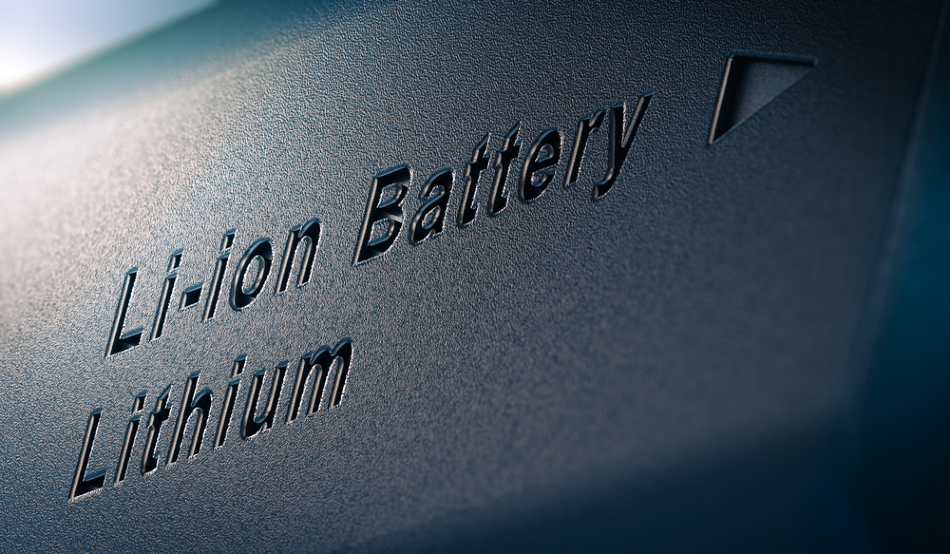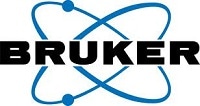Improving the performance of Li-ion batteries relies on a deep understanding of how the materials that make up the device function during use. Scanning Probe Microscopy (SPM)-based PeakForce TUNA can provide in situ conductivity measurements with nanoscale resolution, revealing critical information about material functions in Li-ion batteries. A recent publication in ACS Applied Materials & Interfaces by researchers from Fujian Normal University, Fuzhou, China led by Professor Zhigao Huang highlights how the technique can be used to study cathode materials.

Image Credit:Shutterstock/Olivier Le Moal
Li-ion batteries are extensively utilized in everything from personal electronics to electric cars because they offer higher capacity and power density than most other batteries.1
Like all batteries, Li-ion batteries consist of a cathode, an anode, and an electrolyte. When the battery is charged, lithium ions move from the cathode through the electrolyte to the anode, in a process that stores energy. When the battery discharges, the lithium ions move back to the cathode, and the stored energy is released.1
Although they are already widely used, estimates suggest that Li-ion batteries currently only provide around 10% of their theoretical capacity, so there is lots of room for improvement.
What’s more, there is a constant push to increase implementation of renewable energy sources like solar and wind power. But these power sources are intermittent. So better batteries are needed that can store enough energy to meet power demands even when the sun goes down or there isn’t much wind.
As a result, research continues to push the boundaries ofbattery performance capabilities, aiming for improved capacity, reliability, charging speed, and safety.1-3
Effective Cathode Materials are Central to Battery Performance
Li-ion batteries place several demands on cathode materials. They must be able to release and accept lithium ions easily to enable the battery to function. The more lithium the cathode can release, the more capacity the battery provides. However, it must be able to release the ions without losing its structure, or it will be unstable and only offer a limited lifespan. Lithium ions must be able to move back into the cathode structure quickly and efficiently so that devices can recharge rapidly.2,4
While a range of materials are used for Li-ion cathodes, the majority of them act as intercalation cathodes, which are made up of a solid host network that stores guest Li-ions. The solid networks often consist of metal chalcogenides, transition metal oxides, or polyanion compounds, with layered, spinel, olivine, or tavorite structures. Electrode materials are usually nanostructures, such as particles or rods, that are held together by porous additives that act as mechanical supports. 2,4
The structures of electrode materials are so intricate that nanoscale techniques are needed to properly characterize them. To understand and design better Li-cathode materials, battery researchers need a technique that can measure delicate electrode morphology and localized conductivity with resolutions that reach tens of nanometers.
Understanding LCO Cathode Materials
One of the most common cathode materials is LiCoO2 (LCO), which consists of CoO2- sheets and Li+ ions lying between the layers. When the battery is charged, Li+ ions leave the LCO structure, and a phase transition occurs, resulting in an insulator-to-metal transition in the material.4,5
The crystal structures of LCO during deintercalation have been studied with in situ techniques including X-ray diffraction, neutron diffraction, nuclear magnetic resonance, surface plasmon resonance microscopy, and scanning transmission electron microscopy (STEM). While STEM provides the best spatial resolution, it is not able to clearly distinguish the early stages of the phase transition during deintercalation.6,7
Despite these studies, the LCO phase transition and its effects on battery performance are not yet well understood, and observing the phase transition remains a crucial challenge. Gaining insight into LCO phase transition could help in the design of new and improved materials that are able to release more lithium ions without damaging their structure. This would effectivelyprovide increased battery capacity without decreasing lifespan.
Observing LCO Phase Transitions with Scanning Probe Microscopy (SPM)
Fully understanding the LCO phase transition requires a characterization technique that can detect Li-ion movement in the cathode lattice with high temporal and spatial resolution under operating conditions.
Scanning probe microscopy (SPM) is increasingly becoming the go-to tool for battery characterization. The technique, which involves scanning the surface of a material with a physical probe, can provide physical and chemical information, in situ under relevant environmental conditions. Different probes and scanning techniques can offer a range of information about a material.5,8
Conductivity measurements are traditionally performed using conductive-atomic force microscopy (CAFM) which is based on contact mode. Unfortunately, it can be difficult to obtain consistent, high-resolution measurements with CAFM on delicate samples like electrode surfaces, because they can be damaged by excessive lateral forces between the tip and the sample.9
PeakForce TUNA, developed by Bruker, overcomes the limitations of CAFM. The technique involves scanning the surface with a conductive AFM probe equipped with a current sensor module. As the probe scans, it taps the surface of the material, and a feedback loop keeps the peak force at a gentle, user controlled, value while eliminating lateral forces. As a result, PeakForce TUNA offers consistent, high-sensitivity and high-resolution current imaging. The technique can also be used in liquids, such as electrolytes, making it the ideal SPM technique for studying the LCO phase transitions in situ.9,10
PeakForce TUNA Provides New Insights about LCO Cathodes
Professor Zhigao Huang and his team from Fujian Normal University synthesized LCO thin-film electrodes and used them as cathodes in operating cells containing liquid electrolyte. As they charged the cells, they observed the phase transition of the LCO using in situ PeakForce TUNA. Their results were published in the August 2019 issue of ACS Applied Materials & Interfaces.5
The researchers measured the conductivity distribution at the electrode/electrolyte interface by simultaneously measuring current and topography during the charge/discharge process. They observed an abrupt change in conductivity during intercalation, indicating the formation of the metallic phase.5
They also observed an uneven conductivity distribution, showing that the metallic phase formed preferentially at the edges of the electrode grains. This unequal conductivity distribution may cause irregular stress and wear on the electrode, resulting in faults and decreased performance.5
The research by Professor Huang and his group would not have been possible using other conductive AFM modes, as the high forces associated with them would have likely damaged the delicate electrode materials.
Conclusion
Understanding the properties of battery materials under relevant operating conditions is key to designing better batteries. PeakForce TUNA is an SPM technique that performs conductivity measurements with nanoscale resolution, providing information that can reveal the mechanisms of conductivity in battery materials, as demonstrated by Professor Huang and his team at Fujian Normal University. 5,10
The important information provided by PeakForce TUNA, can be used to design better electrode materials, improve battery performance, and ultimately advance the development of reliable energy storage for renewable energy. 5,10
References and Further Reading
- Lithium-Ion Batteries: Basics and Applications — Korthauer R, Springer, 2018.
- ‘Lithium-ion batteries: outlook on present, future, and hybridized technologies’ — Kim T, Song W, Son DY et al., Journal of Materials Chemistry A, 2019.
- Lithium Batteries: Science and Technology’— Nazri G, Pistoia G, Springer, 2009.
- ‘Li-ion battery materials: present and future’ — Nitta N, Wu F, Jee JT et al., MaterialsToday, 2015.
- ‘In Situ Observation of the Insulator-To-Metal Transition and Nonequilibrium Phase Transition for Li1–xCoO2 Films with Preferred (003) Orientation Nanorods’ — Chen Y, Yu Q, Xu G et al., ACS Applied Materials & Interfaces, 2019.
- ‘In Situ Observation of the Electrochemical Lithiation of a Single SnO2 Nanowire Electrode’ — Huang JY, Zhong L, Wang C et al., Science, 2010.
- ‘In Situ Atomic-Scale Observation of Electrochemical Delithiation Induced Structure Evolution of LiCoO2 Cathode in a Working All- Solid-State Battery.’ — Gong Y, Zhang J, Jiang L et al., Journal of the American Chemical Society, 2017.
- ‘Beyond imaging: Applications of atomic force microscopy for the study of Lithium-ion batteries’ — Weidong Z, Wentao S, Ling-Zhi C, et al., Ultramicroscopy, 2019.
- ‘Simultaneous Electrical and Mechanical Property Mapping at the Nanoscale with PeakForce TUNA’
https://www.bruker.com/fileadmin/user_upload/8-PDF-Docs/SurfaceAnalysis/AFM/ApplicationNotes/Simultaneous_Electrical_and_Mechanical_Property_Mapping_at_the_Nanoscale_with_PeakForce_TUNA_AFM_AN132.pdf
- ‘PeakForce TUNA’ https://www.bruker.com/products/surface-and-dimensional-analysis/atomic-force-microscopes/modes/modes/nanoelectrical-modes/pf-tuna.html

This information has been sourced, reviewed and adapted from materials provided by Bruker Nano Surfaces.
For more information on this source, please visit Bruker Nano Surfaces.